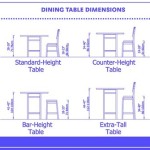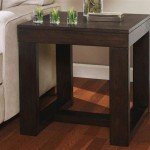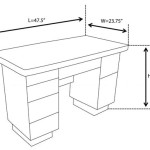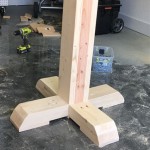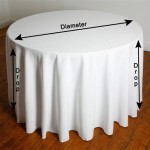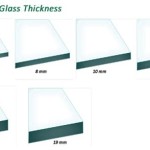Pottery Barn Side Tables: A Comprehensive Overview
Pottery Barn, a renowned retailer of home furnishings, offers a diverse selection of side tables, catering to various aesthetic preferences and functional requirements. These tables serve as essential accent pieces, providing surfaces for lamps, books, beverages, and decorative items while contributing to the overall design and ambiance of a living room, bedroom, or other living space. This article provides a detailed examination of Pottery Barn's side table offerings, encompassing materials, styles, sizes, functionality, and considerations for selecting the optimal table for a specific setting.
Materials and Construction
Pottery Barn utilizes a wide range of materials in the construction of its side tables, each offering distinct properties and visual characteristics. These materials contribute significantly to the table's durability, aesthetic appeal, and overall value. Understanding the properties of these materials is crucial for making an informed purchase decision.
Wood: Wood is a primary material in many Pottery Barn side tables. Varieties include hardwoods like mahogany, oak, and maple, known for their durability and rich grain patterns. Softwoods, such as pine, are also employed, offering a more cost-effective option while still providing adequate strength. The wood is often finished with stains, paints, or veneers to enhance aesthetic appeal and protect the surface. Reclaimed wood is also a popular choice, offering a rustic and environmentally conscious option.
Metal: Metal components, often used for legs, frames, or decorative accents, add a touch of modernity and industrial chic to side tables. Common metals include wrought iron, steel, and brass. Metal is valued for its strength, durability, and resistance to wear and tear. The finish applied impacts the table's aesthetic, with options ranging from brushed nickel to antique bronze and powder-coated colors.
Glass: Glass surfaces, especially tempered glass, are incorporated into some side tables. Glass adds an element of elegance and sophistication while providing a smooth and easy-to-clean surface. Clear glass allows light to pass through, creating a sense of spaciousness, while frosted or smoked glass provides a more opaque and contemporary look.
Stone: Marble, granite, and other stone materials are used in some higher-end Pottery Barn side tables. Stone offers exceptional durability and a luxurious aesthetic, often serving as a tabletop surface. The natural variations in stone patterns add a unique and sophisticated element to the piece.
Upholstery: In certain designs, especially those intended for use as ottomans or multi-functional pieces, upholstery is employed. This includes fabrics like linen, cotton, or leather, providing a soft and comfortable surface. Upholstery can add a touch of warmth and texture to the side table.
Styles and Designs
Pottery Barn offers a diverse range of side table styles, reflecting various design movements and aesthetic preferences. From classic and traditional to modern and contemporary, the selection caters to a broad spectrum of interior design themes. Identifying your desired style is paramount in selecting a table that complements your existing décor.
Traditional: Traditional side tables often feature classic silhouettes, ornate details, and rich wood finishes. Elements such as turned legs, carved accents, and antique-inspired hardware are common. These tables often evoke a sense of timeless elegance and formality.
Modern: Modern side tables are characterized by clean lines, minimalist designs, and geometric shapes. Materials like metal, glass, and sleek wood finishes are often incorporated. These tables emphasize functionality and simplicity, complementing contemporary interiors.
Rustic: Rustic side tables embrace natural materials, distressed finishes, and a sense of warmth and informality. Reclaimed wood, exposed hardware, and weathered textures are common. These tables evoke a cozy and inviting atmosphere, often suitable for farmhouse or cottage-style interiors.
Coastal: Coastal side tables reflect a relaxed and breezy aesthetic, inspired by seaside living. Light-colored wood finishes, woven materials, and nautical-inspired details are often incorporated. These tables evoke a sense of serenity and tranquility, complementing coastal-themed interiors.
Industrial: Industrial side tables combine raw materials, exposed hardware, and a utilitarian aesthetic. Metal frames, concrete tops, and distressed wood finishes are common. These tables evoke a sense of urban chic and functionality, complementing industrial-style interiors.
Glam: Glam side tables often incorporate luxurious materials, shimmering finishes, and elegant details. Mirrored surfaces, metallic accents, and plush upholstery are frequently used. These tables evoke a sense of sophistication and opulence, complementing glamorous interiors.
Functionality and Features
Beyond their aesthetic appeal, Pottery Barn side tables offer a range of functional features designed to enhance convenience and organization. The choice of features depends on the intended use and the specific needs of the user. Evaluating these features is essential in selecting a table that meets practical requirements.
Storage: Many side tables incorporate storage solutions, such as drawers, shelves, or cabinets. Drawers provide concealed storage for smaller items, while shelves offer open storage for books, magazines, or decorative objects. Cabinets provide enclosed storage for larger items, keeping them out of sight. The type and amount of storage should align with the intended use of the table.
Adjustable Height: Some side tables feature adjustable height mechanisms, allowing them to function equally well beside a sofa or chair. This adaptability provides flexibility in various seating arrangements. This is particularly useful in small spaces or when the table needs to serve multiple purposes.
Tilt-Top Tables: Tilt-top tables offer a surface that can be angled, making them suitable for reading, writing, or using a laptop. This adjustable feature enhances versatility and comfort. These tables are often ideal for use beside a chair or recliner.
Nesting Tables: Nesting tables consist of two or more tables of varying sizes that can be stored together to save space. When needed, they can be pulled apart to provide additional surface area. This is a practical solution for small living spaces or for accommodating guests.
Built-in Outlets and USB Ports: Some contemporary side tables incorporate built-in electrical outlets and USB ports, providing convenient charging stations for electronic devices. This feature eliminates the need for extension cords and keeps devices readily accessible.
Wheels or Casters: Side tables with wheels or casters offer enhanced mobility, allowing them to be easily moved around the room. This is particularly useful for rearranging furniture or for accessing different areas of the space.
Size and Dimensions
The size and dimensions of a side table are critical factors in ensuring that it fits proportionally within the designated space and complements the surrounding furniture. Careful consideration of these dimensions is essential to avoid overcrowding or imbalance.
Height: The height of the side table should be appropriate for the seating it will accompany. Ideally, the tabletop should be at or slightly below the arm of the chair or sofa, allowing for easy access to items placed on the table. A table that is too high or too low can be awkward and uncomfortable to use.
Width and Depth: The width and depth of the side table should be proportional to the size of the room and the surrounding furniture. A large room can accommodate a larger table, while a smaller room requires a smaller table to avoid overwhelming the space. The shape of the table, whether square, rectangular, round, or oval, also influences its perceived size and impact on the room.
Clearance: Ensure adequate clearance around the side table to allow for comfortable movement and access to seating. Avoid placing the table in a high-traffic area where it may obstruct passage or create a hazard. Consider the placement of rugs and other furniture to ensure sufficient space.
Placement and Considerations
The placement of a side table significantly impacts its functionality and visual appeal. Consider the intended purpose of the table and the surrounding environment to determine the optimal location. Careful planning can enhance the overall design and convenience of the space.
Living Room: In the living room, side tables are typically placed beside sofas, chairs, or sectionals. They provide a surface for lamps, beverages, remote controls, and decorative items. Consider the proximity to electrical outlets for lamps and charging devices. Grouping multiple side tables together can create a cohesive and balanced arrangement.
Bedroom: In the bedroom, side tables, often referred to as nightstands, are placed beside beds. They provide a surface for bedside lamps, reading materials, alarm clocks, and personal items. Ensure that the height of the nightstand is appropriate for the height of the bed. Consider the need for storage, such as drawers or shelves, to keep essential items within reach.
Entryway: In the entryway, side tables can serve as a decorative and functional accent. They provide a surface for keys, mail, and other items that are frequently needed upon entering or leaving the home. Consider adding a lamp or a mirror to enhance the functionality and visual appeal of the entryway.
Home Office: In a home office, side tables can provide additional surface area for office supplies, books, or equipment. Consider a table with storage to keep the workspace organized and clutter-free. The table should be positioned for easy access from the desk or chair.
Outdoor Spaces: For outdoor spaces, such as patios or decks, choose side tables specifically designed for outdoor use. These tables are typically made from weather-resistant materials, such as teak, aluminum, or resin, to withstand exposure to the elements. Consider tables with drainage holes to prevent water accumulation.
By carefully considering these factors, a suitable Pottery Barn side table can be chosen that enhances both the functionality and aesthetic appeal of the desired space.

Westbrook Square End Table Pottery Barn

Parquet Square Reclaimed Wood End Table Pottery Barn

Palisades Rectangular Reclaimed Wood Side Table Pottery Barn

Benchwright Round End Table Pottery Barn

26 00 End Side Tables Pottery Barn

Nightstands Bedside Tables Pottery Barn

Griffin Rectangular Reclaimed Wood End Table Pottery Barn

Tanner Round Glass End Table Pottery Barn

Toscana Rectangular Side Table Pottery Barn

Benchwright Rectangular End Table Pottery Barn
Related Posts

